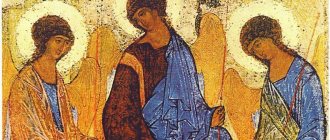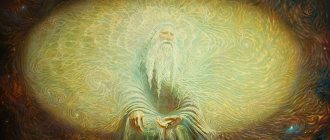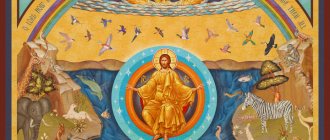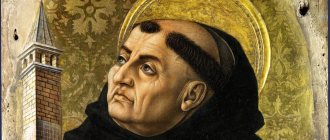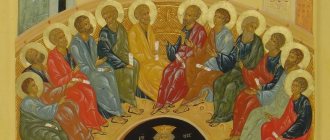For many believers, the concept of peace is inseparable from the Lord. God is the world, the entire universe, life, nature, and the basis of the universe. But not only followers of individual faiths accept and support this point of view. Over the course of many centuries, learned men in different countries of Europe developed the philosophy of “pan theos” (pantheism), which in its line of thought is very close to a simple believer who believes that God is contained in all things.
The essence of pantheism
Since pantheism unites God-substance and the world-Universe, there is a need to correlate the signs of the static nature of the divine nature, such as infinity, eternity, immutability, and mobility, constant variability of the nature of the world. According to the ancient philosopher Parmenides, God and the world are inseparable from each other, while the static nature of the deity in a unique form is characteristic of all living things (like endless cyclicity). And pantheism in Hegel’s philosophy endowed God with abilities for movement and development that were usually unusual for him, thereby eliminating the main contradiction between the divine and the living. Supporters of immanent pantheism tend to see God as some kind of higher law, an eternal and unchanging force that governs the world. This line of thought was developed by Heraclitus, the adherents of Stoicism, and this, in general terms, was the pantheism of Spinoza. Within the framework of Neoplatonic philosophy, an emanative type of pantheism arose, according to which nature is an emanation derived from God. Emanational pantheism in the philosophy of the Middle Ages did not conflict with the dominant theological doctrine, but only represented a variation of realism. This kind of pantheism can be traced in the works of David of Dinan and Eriugena.
The essence and history of pantheism
The name of the philosophical movement was first voiced by Joseph Raphson in 1697. He wrote a work called "De Spatio Reali". Eight years later, the Irish philosopher John Toland wrote and described this term in English. In this work, he explained the opinion of people who do not believe in an eternal personality, and attribute a holy nature only to the Universe.
Even in ancient times, philosophers thought about where the signs of the static nature of God come from and who controls them: infinity, immutability, eternity, but at the same time the mobility and variability of the nature of the world. Many followers of this trend do not separate God and the world.
Directions of pantheism
In the history of philosophy, there were two directions that unite all pantheistic teachings:
1. Naturalistic pantheism, presented in the works of the Stoics, Bruno, and partly Spinoza, deifies nature, all living things. It is characterized by such concepts as infinite mind and world soul. This trend tends towards materialism, the reduction of the divine principle in favor of the natural.
2. Mystical pantheism developed in the doctrines of Eckhart, Nicholas of Cusa, Malebranche, Boehme, and Paracelsus. To define this direction there is a more precise term: “panentheism” - “everything is in God,” since philosophers of this direction tend to see not God in nature, but nature in God. Nature is a different level of God’s existence (objective idealism).
There are many examples of mixing both types of pantheism within the teachings of one thinker.
Origin of the term pantheism
Pantheism translated from ancient Greek means: “pan” - everyone, “theos” - God, deity. The name shows what idea the followers of the teaching adhere to. This concept focuses on the concept that God is represented by people not as the personality of the Creator, but as the Universe. It is the Universe, according to pantheists, that is the basis of everything, a single and holy substance. In this concept there is no place for the exaltation of man; pantheists do not accept anthropocentrism. Pantheistic philosophers emphasize respect for nature.
Story
The term “pantheism” (or rather “pantheist”) was first used by John Toland, an English materialist philosopher at the turn of the 17th-18th centuries. But the roots of the pantheistic worldview go back to ancient Eastern religious and philosophical systems. Thus, Hinduism, Brahmanism and Vedanta in Ancient India and Taoism in Ancient China were clearly pantheistic in nature.
The oldest religious and philosophical texts carrying the ideas of pantheism are the ancient Indian Vedas and Upanishads. For Hindus, Brahman is a boundless, permanent, impersonal essence that has become the basis for all life in the Universe, everything that has ever existed or will exist. The Upanishad text constantly affirms the idea of unity between Brahman and the surrounding world.
Ancient Chinese Taoism is a deeply pantheistic teaching, the foundations of which are set out in the work “Tao Te Ching”, written by the semi-legendary sage Lao Tzu. For Taoists, there is no creator god or any other anthropomorphic hypostasis; the divine principle is impersonal, it is akin to the concept of the path and is present in all things and phenomena.
Pantheistic tendencies are present to one degree or another in many ethnic religions of Africa, intertwined with polytheism and animism. Zoroastrianism and some sects of Buddhism are also pantheistic in nature.
In the 14th and 15th centuries in Western Europe, pantheism was in decline. The teachings of the outstanding Christian theologians John Scotus Eriugena, Meister Eckhart and Nicholas of Cusa were very close to it, but only Giordano Bruno openly supported this worldview. The ideas of pantheism were further spread in Europe thanks to the works of Spinoza.
In the 18th century, under the influence of his authority, his pantheistic sentiments spread among Western philosophers. Already at the beginning of the 19th century, pantheism was spoken of as the religion of the future. In the 20th century, this worldview was pushed aside by the ideology of fascism and communism.
Modern ideas of pantheism
Modern philosophy is permeated with the ideas of pantheism. This movement has become an important element of many theories and religions. In the modern world, some ideas of the direction are used by environmentalists, whose goal is to improve the ecology and conditions of the human environment.
At the end of the 20th century, societies based on such a movement as the “World Pantheistic Movement” appeared in world philosophy. Pantheism is good for perception by society as a direction for protecting the planet's biosphere from gross interference by human activity. At the moment, the philosophical movement is not perceived as a separate religion.
The origins of pantheism in ancient philosophy
Pantheism is in the philosophy of antiquity the main element of all knowledge of the world, nature and space. It is first found in the teachings of thinkers of the pre-Socratic period - Thales, Anaximenes, Anaximander and Heraclitus. The religion of the Greeks at this time was still characterized by convinced polytheism. Consequently, early ancient pantheism is a belief in a certain animate divine principle inherent in all material things, living organisms and natural phenomena.
Pantheistic philosophy reached its highest flowering in the teachings of the Stoics. According to their doctrine, the cosmos is a single fiery organism. Stoic pantheism unites and identifies all living things, including humanity, with the cosmos. The latter is both God and a world state. Consequently, pantheism also means the original equality of all people.
During the Roman Empire, the philosophy of pantheism spread widely due to the influential position of the Stoic and Neoplatonist schools.
Pantheistic concepts in religion
A careful study of the fundamental principles of most religions reveals their close connection with the direction. In different parts of the globe, people wondered about the role of the divine principle in the structure of things. The Universe initially represents the unity of the natural and material world with the preservation of reality - the Creator - in every particle of existence.
In Taoism
The history of Taoism knows several stages of its development. Thus, in the works of its key thinkers Zhuang Tzu and Lao Tzu, it has a pantheistic basis, despite the fact that in the future Taoism would turn into a religion with many different deities. In the works of Lao Tzu there is no Creator embodied in the image of a person, a person. At the heart of the entire universe lies the “Tao” (path) - the unity present at the basis of all things and phenomena. Harmony in Taoism is life in accordance with the natural and world unity of Tao.
A similar idea is developed in the thoughts of Chuang Tzu. He writes that the universe is impossible without Tao, and we are all created from its blessed essence. The identity of nature and the divine essence is proven in Eastern philosophy with the help of the thought of universal harmony.
In Hinduism
It is believed that the first pantheistic thoughts originated in Indian religious texts. Indian scriptures say that life is filled with an endless, impersonal reality that does not change, does not transform. It shapes the universe, being the basis of all living things.
This idea can be clearly seen in Brahman theology, in the ancient Vedas and in the philosophy of Advait Vedanta
In other religions
The pantheistic principle can be traced in many little-known religious movements. For example, in Indian and African tribes, traditional faith with elements of polytheism and animalism is intertwined with pantheistic ideas.
Sufism takes as its basis the belief in the unity of nature and the divine. Similar thoughts fill the treatises of Sufi thinkers who were influenced by Western philosophy of the 19th century.
Other teachings do not bypass this trend:
- neopaganism;
- theosophy;
- occultism;
- and Buddhism.
Even some ethical schools of thought, such as Tolstoyism, include in their ideas thoughts about the natural unity of the world.
Middle Ages
The Middle Ages are a time of dominance of monotheistic religions, which are characterized by defining God as a powerful personality ruling over man and the whole world. At this time, pantheism was preserved in the emanation theory of Neoplatonist philosophy, which represented a kind of compromise with religion. Pantheism first appeared as a materialistic concept in David of Dinan. He argued that the human mind, God and the material world are one and the same.
Many Christian sects, recognized by the official Church as heresies and subjected to persecution, gravitated toward pantheism (for example, the Amalricans in the 13th century).
What is the danger of pantheism?
The Church has always had a negative attitude towards the ideas of pantheism. Let modern pantheists try to use the word “God” as little as possible, replacing it with “nature”, “Universe”, “reality”. Some continue to use this word solely to express strong feelings, but this is condemned by the church. In her opinion, there is a definite harm to pantheism, which manifests itself in the following:
- Religious terms in pantheism are used in a philosophical sense. First of all, this concerns the word God itself, because pantheists do not believe in him in the traditional understanding that is dictated by church canons: as a person and a creator.
- Pantheism denies the provisions of theism and is considered mainly as its alternative. In theism, God is seen as a transcendent person in relation to the world. Pantheists deny God's ability to make informed decisions.
- The relationship between pantheism and atheism causes much controversy. Atheists believe that the God of pantheists is not God in the generally accepted sense, and is not transcendental.
Renaissance
In contrast to medieval theology, Renaissance thinkers turned to the ancient heritage and natural philosophy, paying increasingly close attention to the natural sciences and comprehension of the secrets of nature. The similarity with ancient views was limited only to the recognition of the integrity and animation of the world and space, but the methods of studying it were significantly different. The rationalistic views of antiquity (in particular, the physics of Aristotle) were rejected and the ideas of magical and occult knowledge of nature as a single spiritualized principle were promoted. A great contribution to this direction was made by the German alchemist, physician and astrologer Paracelsus, who, with the help of magic, tried to control the archaeus (soul) of nature.
It was the pantheism of the Renaissance, characteristic of many philosophical theories of that time, that was the unifying principle between such extremes as natural philosophy and theology.
The very idea of identifying the world with the divine essence arose much earlier; according to some researchers, it can already be found in early religious and mystical ideas, for example in Hinduism, Taoism or Celtic spiritualism, as well as in the philosophy of Stoicism and Platonism. In the pre-Christian period, this idea was not developed in detail at a philosophical level, and the question of whether this or that concept is pantheistic during this period remains debatable.
The first elaborate discussions on the topic of pantheism can be found in Christianity when addressing the issue of the relationship between God and the world. For example, Thomas Aquinas distinguished between two ideas: the idea that God is the form of all things, and the idea that God is the matter of all things. If the world is only one aspect of God, then it is necessary to explain in what sense the world can be identical with God. Although no Christian thinker explicitly held a pantheistic view in the Middle Ages, the closest views can be found in John Scotus Eriugena, Meister Eckhart, and Nicholas of Cusa.
The real flowering of pantheism comes in modern times. A clearly pantheistic point of view among scientists was defended by Giordano Bruno, and the greatest contribution to the further development and dissemination of this concept was made in the 17th century. Benedict Spinoza. Spinoza played an important role in developing the ontology of pantheism and the associated neutral monism and panpsychism. His concept can be considered classical pantheism, so the term Spinozism was sometimes used as a synonym for pantheism.
Subsequently, pantheism in the form of individual ideas and beliefs appears in various works, but the most significant are two historical processes closely related to pantheism. Firstly, this is the development of German idealism, for example, pantheistic ideas appear in the works of Fichte, Schelling, Hegel, and secondly, this is increasing secularization and an attempt to find a new theology for philosophy and science. With the merging of religiosity in the scientific community and pantheism, the concept of naturalistic pantheism is being developed, although researcher Joseph Needham believes that this direction is not an innovation and Taoism can already be attributed to it. In 1828, Karl Krause proposed the term "panentheism" to name the idea that the world resides in God, but is not identical with him, as is commonly believed in pantheism. This concept was supposed to be an alternative between theism and pantheism. From this point on, many discussions regarding pantheism have centered on the question of how the two concepts relate and where the line between them lies.
By the end of the 19th and beginning of the 20th centuries, pantheism was so popular that Pope Pius IX included it in the Syllabus Errorum as one of the erroneous concepts that contradict Christianity. Among the pantheists during this period are, for example, the physicist Albert Einstein, the poet Walt Whitman and the Russian writer Leo Tolstoy.
The prevalence of the ideas of pantheism in each period of history is difficult to assess, since pantheism is rarely expressed explicitly by its supporters. In the twentieth century, interest in pantheism as such declined, but the ideas of pantheism spread with undiminished intensity. In the Christian community, where pantheism was not welcomed, thinkers leaned toward panentheism, which was especially evident in Russian religious philosophy. S. Frank, for example, considered himself a panentheist, although he was often criticized for his inclination towards pantheism. The ideas of naturalistic pantheism are widespread in the scientific community, although very few scientists call themselves supporters of this concept.
The revival of interest in pantheism in the social environment begins at the end of the twentieth century. In 1975, the “Ecumenical Pantheistic Society” was created, and in 1999, the more numerous “World Pantheistic Movement”.
At the end of the twentieth century, philosophical interest in the topic of pantheism was gaining momentum. Of greatest interest are the discussions by R. Oakes and P. Quinn, presented in the form of articles, as well as the monograph by M.P. Levina. In addition, many scientists study the history of pantheism, including D. Moran, K. Lauer, L. Ford, G. Parkinson, etc. The spread of pantheism in philosophy is closely related to the development of the ideas of panpsychism, which for a long time was isolated from the theological aspect. The article “Pantheism as Panpsychism” by K. Pfeiffer is devoted to this topic.
In the twenty-first century, there is an even stronger tendency in analytical philosophy to bring these discussions closer together. The International Journal for Philosophy of Religion and the European Journal for Philosophy of Religion publish issues entirely devoted to pantheism and panentheism. The main problems that interest researchers of pantheism today are the compatibility of pantheism with the understanding of God as a person, the problem of dividing a single divine consciousness into many separate consciousnesses (decombination), the problem of the compatibility of pantheism with ethical and moral issues, and the ability of panpsychism to solve the problems of traditional theism. Among the most famous modern pantheists are such philosophers as T. Sprigge, F. Goff, Y. Nagasawa, S. Coleman, A. Bukarev, P. Garisson (founder and president of the “World Pantheistic Movement”), etc.
Pantheism must be distinguished from theistic immanentism. Although immanentism presupposes that God (or the divine) is entirely in the world, it does not necessarily identify God and the world. Immanentism is an attempt to combine theism with modern scientific concepts and abandon the supernatural, which is poorly explained in scientific language. Often supporters of immanentism criticize pantheism. One of the supporters of this approach is P. Forrest.
main sources
Classic works
Eriugena, I.S. About natures, about the division of nature (partial Russian translation. John Scotus. Eriugena. Perifuseon (“On Natures”), from book 1. // Philosophy of nature in antiquity and the Middle Ages. - M., 2000; John Scotus Eriugena Perifuseon (“On natures”), from book 3. // Middle Ages. - M., 1994. - T. 57; 1995. - T. 58).
Bruno J. On the beginning and the one reason, 1584.
Benedict S. Ethics proven in geometric order. Moscow: AST, 2001.
Toland J. Socinianism truly stated; being an example of fair dealing in all theological controversies. To which is prefixt, indifference in disputes: recommended by a pantheist to an orthodox friend, London, 1705.
Hegel, F.V. Philosophy of Law, 1820.
Illingworth, J. R. Divine Immanence, London: Macmillan, 1898.
Classic works on the history of pantheism
Plumptre C. General Sketch of the History of Pantheism, Cambridge University Press, 2011 (reprint from the 1878-1879 edition) (Volume 1, Volume 2).
Dewey J. The Pantheism of Spinoza // Journal of Speculative Philosophy. 1882. 16 (3). R. 249-257.
Stokes, G. J. Gnosticism and Modern Pantheism // Mind. 1895. 4 (15). R. 320-333.
Harris, W. T. Is Pantheism the Legitimate Outcome of Modern Science? // Journal of Speculative Philosophy.1885. 19. R. 407-428.
Modern pantheism
Harrison P. Elements of Pantheism: A Spirituality of Nature and the Universe, Coral Springs, Florida: Llumina Press, 2013.
Alexander S. Theism and Pantheism. // Hibbert Journal. 1926. 25:251.
Otto R., The Idea of the Holy, Oxford: Oxford University Press, 1958.
Corrington, R. S. Deep Pantheism: Toward a New Transcendentalism. Lexington Books, 2015.
Sprigge, TLS The God of Metaphysics. Clarendon Press, 2006.
Sprigge, T. L. S. Pantheism. // The Monist. 1997. 80 (2). R. 191-217.
Jantzen G. God's World, God's Body. Westminster Press, 1984.
Leslie J. Infinite Minds: A Philosophical Cosmology. Oxford University Press, 2001.
Levine, M. P. Pantheism, Ethics and Ecology. // Environmental Values. 1994. 3 (2). R. 121-138.
Levine, M. P. Pantheism; A non-theistic concept of deity, London: Routledge, 1994.
Forrest P. God Without the Supernatural: A Defense of Scientific Theism, Ithaca, New York: Cornell University Press, 1996.
Other significant contemporary works are included in the collection Alternative Concepts of God: Essays on the Metaphysics of the Divine, mentioned below, and in the issues of the International Journal for Philosophy of Religion and the European Journal for Philosophy of Religion on pantheism and panentheism.
Analysis and criticism
Works on the history of pantheism
Baltzly D. Stoic Pantheism // Sophia. 2003. 42(2). R. 3-34.
The author defends the view that Stoic teaching should be considered pantheism, and provides arguments in support of this position.
Butakov P. Was the god of the Stoics a person? (Was the Stoic God a Person?) // Schole. 2021. 11 (2). R. 558-569.
The article examines the question of whether the pantheism of the Stoics in antiquity assumed God as a person. Critical arguments are directed against the identification of so-called “personal pantheism” and the pantheism of the Stoics.
Moran D. Pantheism from John Scottus Eriugena to Nicholas of Cusa // American Catholic Philosophical Quarterly. 1990. 64(1). P. 131-152.
The article examines the problem of pantheism in medieval philosophy, in particular the arguments of Nicholas of Cusa regarding pantheistic doctrine.
Lauer Q. Hegel's Pantheism. // Thought: Fordham University Quarterly. 1979. 54 (1). P. 5-23.
The article examines Hegel's theological views and analyzes pantheistic ideas in his philosophy.
Parkinson, G. H. R. Hegel, Pantheism, and Spinoza // Journal of the History of Ideas. 1977. Vol. 38, No. 3. P. 449-459.
The article examines the continuity of pantheistic ideas between Spinoza and Hegel, and examines the degree of influence that Spinoza had on the formation of pantheistic ideas in Hegel.
Copleston, F. C. Pantheism in Spinoza and the German Idealists. // Philosophy. 1946. 21 (78) P. 42-56.
Copleston considers the problem of the relationship between pantheism and atheism. He analyzes Schopenhauer's remark that pantheists effectively deny the existence of God by considering the positions of Spinoza and the German idealists.
Works examining the relationship between pantheism and other views
Oakes, R.A. Classical Theism and Pantheism: A Victory for Process Theism? // Religious Studies. 1977. 13 (2) P. 167-173.
Quinn, P. L. Divine Conservation and Spinozistic Pantheism // Religious Studies. 1979. 15 (3). R. 289-302.
Oakes, R.A. Classical Theism and Pantheism: A Reply to Professor Quinn // Religious Studies. 1980. 16 (3). P. 353-356.
The three articles above are a discussion between philosophers Robert Oakes and Philip Quinn about the nature of theism and pantheism. Oakes defends the position that pantheism is compatible with the idea of divine preservation, and Quinn contradicts him on this point. Divine conservation is the concept that the existence of all contingently existing things necessarily and continuously depends on God.
Oakes, R.A. Does Traditional Theism Entail Pantheism? // American Philosophical Quarterly. 1983. 20(1). R. 105-112.
Continuing the theme raised in the debate with Quinn, Oakes considers the view that traditional theism entails the acceptance of pantheism.
Mullins, R. T. The Difficulty with Demarcating Panentheism. // Sophia. 2021. 55 (3). P. 325-346.
The author examines the problem of demarcating pantheism from varieties of theism in modern literature. Analyzing existing classifications, he comes to the conclusion that none of them gives the necessary clear result, and proposes his own classification.
Ford, LS Pantheism Vs. Theism: A Re-Appraisal // The Monist. 1997. 80 (2). P. 286-306.
The author explores the question of the relationship between pantheism and theism, comparing the personal God in theism and the impersonal God in pantheism. A new approach to comparing these concepts is proposed based on a new understanding of temporal modalities: past, present and future.
Forrest P. Spinozistic Pantheism, the Environment and Christianity // Sophia. 2010. 49 (4). P. 463-473.
The author examines the argument against the compatibility of pantheism and Christianity, and based on the incompatibility of pantheism and the idea of the Fall.
Forrest P. Pantheism and Science // The Monist. 1997. 80 (2). P. 307-319.
The author examines the compatibility of pantheism and modern science, trying to answer the question: does modern science give preference to pantheism over other concepts?
Harwood R. Polytheism, Pantheism, and the Ontological Argument // Religious Studies. 1999. 35 (4). P. 477-491.
The author examines the consequences of the ontological argument in favor of the existence of God and comes to the conclusion that this argument, if true, leads to polytheism or pantheism.
Pantheism and the problem of evil
Siwek P. How Pantheism Resolves the Enigma of Evil // Laval Théologique et Philosophique. 1955. 11 (2). R. 213.
The author compares how the problem of evil is solved in pantheism and in theistic dualism.
Levine, MP Pantheism, Theism and the Problem of Evil // International Journal for Philosophy of Religion. 1994. 35 (3). R. 129-151.
The author examines the problem of evil in pantheism, arguing that it is theistic and is not directly related to pantheism, since pantheism rejects the key provisions of theism for the problem to arise.
Review works
Alternative Concepts of God: Essays on the Metaphysics of the Divine. Andrei Buckareff & Yujin Nagasawa (eds.) – 2021 – Oxford University Press.
The main goal of the authors of this volume is to show that philosophy of religion must take alternative conceptions of the divine seriously. The collection, which includes works by Peter Forest, Carl Pfeiffer, John Lasley, Brian Leftow, Eugene Nagasawa, John Bishop, Ken Perzyk, Marilyn Addams, presents various concepts of the divine from the point of view of pantheism and panentheism, demonstrating their validity as approaches to understanding the nature of the divine.
Alternative Concepts of God // European Journal for Philosophy of Religion. 2021. Vol 11, No 2.
A special issue of the “European Journal for the Philosophy of Religion” dedicated to pantheism and panentheism, which includes works by such philosophers as Andrei Bukarev, Eugene Nagasawa, Ryan Byerly, Oliver Grisp, Janine Diller, Benedict Goecke, Samuel Lebens, John Lasley, Chad Meister and others . The issue is devoted to the consideration and comparison of various theistic, pantheistic and panentheistic concepts.
Special Issue on Pantheism and Panentheism // International Journal for Philosophy of Religion. 2021. Vol. 85. Issue 1.
A special issue of the International Journal of Philosophy of Religion on pantheism and panentheism includes works by Mikael Stenmark, Georg Gasser, Sam Colman, John Lasley, Philip Goff, and Elizabeth Burns. The issue is devoted to the consideration and comparison of various theistic, pantheistic and panentheistic concepts.
Interpretation of pantheism in the teachings of Nicholas of Cusa
One of the brightest representatives of pantheism of the Early Renaissance was the famous German philosopher Nicholas of Cusa. He lived in the 15th century (1401-1464). At that time, he received a solid education and became a priest. He was very gifted, devoted to the church and had a successful career, becoming a cardinal in 1448. One of the main goals of his life was to strengthen the authority of Catholicism. Along with his active role in the church life of Europe, Cusansky devoted a lot of time to philosophical works. His views were closely related to the teachings of the Middle Ages. However, the pantheism of Nicholas of Cusa acquired the features of an inextricable organic integrity, constant movement and development of the world and, consequently, its inherent divinity. He contrasted the self-confident knowledge of the Middle Ages about God and the world with the theory of “scientific ignorance”, the main idea of which was that not a single earthly teaching is capable of providing an understanding of divine greatness and infinity.
Criticism and denial of pantheism
A doctrine with a long history - pantheism, continues to disturb the minds of people to this day. However, the consistency of this ideology has many contradictions and opponents.
Pantheism says that man is a part of the divine, only momentarily aware of himself, and then dissolves in the ocean of infinity. Thus, the doctrine denies the existence of free will, moral values, and the distinction between good and evil. This view has been heavily criticized by theistic religions.
Pantheism is capable of equalizing the rights of deities, humans, and the smallest insect, but Christianity insists that people are created in the image of the Lord and have a certain uniqueness, originality. In the first case, perfection is impossible, since all will is determined by God the Universe, but in the second, the dictates of matter are destroyed.
In the Christian tradition, the Lord and man are different; human nature is subject to something higher, which can lead to transformation. But for the pantheist, there is only one action, consistent with the motivation (fate) that has already been determined once and for all.
The main idea of pantheism is that God is an impersonal principle to which every thing in the earthly material world is involved.
The Orthodox Church denies the theory of pantheism
The classical concept of such a philosophy is as follows: the entire universe is based on the Divine substance. It is eternal, self-causal, indivisible and contained in everything. And, although the ideology of pantheism affirms the existence of God, many thinkers equate this trend with atheism and scientific materialism. After all, in fact, pantheists call God the fundamental principle of the entire visible world and deny his personal nature.
This makes church traditions and prayer meaningless—there is no one to offer it to.
Philosophy of Giordano Bruno
Thinker and poet, follower of Cusanus and Copernicus, the 16th century Italian philosopher Giordano Bruno was a true pantheist. He believed that all life on Earth was spiritual, endowed with a spark of divine conduct. According to his teaching, God is contained in all parts of the world without exception - the greatest and the smallest, the invisible. All nature together with man is one integral living organism.
In an attempt to create an ideological basis for the teachings of Copernicus, he put forward the theory of the existence of many worlds and a Universe that has no boundaries.
The pantheism of Giordano Bruno, an Italian thinker of the 16th century, later became a classic concept for the Renaissance.
Related Concepts
A number of well-known philosophical and theological concepts contain individual elements of classical theism in combination with thoughts that dominate the teachings of pantheists. This happens due to the fact that, despite its detachment from other religions, not a single concept is able to ignore the achievements of third-party concepts, especially those that have been developed for many years by the best minds of mankind.
Panentheism
The term “panentheism” appeared in Germany in the 19th century and is translated from ancient Greek as “all is in God.” According to this teaching, God reveals himself not only in all things in the Universe, but is also present outside the Universe. Sometimes they refuse to consider panentheism as an independent phenomenon, and classify it as one of the branches of the Pantheism movement. But in recent years, experts have found more and more reasons to separate these two teachings.
Pandeism
Pandeism is a philosophical movement that asserts that “everything is God.” Adherents of pandeism believe in the divine nature of all things, but categorically deny the personality of God. This concept is mainly based on a movement called “deism.”
Deism - recognizes the existence of God, but at the same time rejects all mystical phenomena attributed to him. In 1910, a book was published that most accurately describes the teachings of pandeism. Its author is philosopher Max Bernhard Weinstein.
Panpsychism
Panpsychism is a philosophical movement that talks about the animation of nature.
Forms of this teaching, although somewhat outdated, are considered:
- hylozoism;
- doctrines about the soul;
- animistic ideas of some primitive cultures.
Individual manifestations of panpsychism can be found in the works of prominent philosophers of the past:
- G.V. Leibniz;
- A. Schopenhauer;
- F. V. J. Schelling;
- K.E. Tsiolkovsky.
Modern followers of this movement include David Chalmers and Galen Strawson.
Pantheism in the philosophical doctrine of B. Spinoza
The philosophical heritage of B. Spinoza is the most striking concept of pantheism created in modern times. To present his vision of the world, he used the geometric method, as he himself called it. He was guided by him when creating the fundamental work “Ethics,” dedicated to philosophical metaphysics, nature, God, and man. A separate section is devoted to the human mind, feelings, moral and ethical problems. The author presents definitions for each question in strict sequence, followed by axioms, then theorems and their proofs.
At the center of Spinoza's doctrine is the idea of the identity of God, nature and substance. The priority of the divine, its dominant role in the overall picture of the world, are characteristic of the philosophy of the New Age. But Spinoza, following Descartes, defends the point of view that the existence (being) of God must be proven. Based on the arguments of his predecessor, he significantly expanded his theory: Spinoza abandoned the original givenness, the a priori nature of the existence of God. But proof of this is possible thanks to the following postulates:
- there is an infinite number of knowable things in the world;
- the limited mind is not able to understand the unlimited truth;
- knowledge is impossible without the intervention of an external force - this force is God.
Thus, in Spinoza’s philosophy there is a combination of the infinite (divine) and the finite (human, natural), the very existence of the latter proves the presence of the former. Even the thought of the existence of God cannot appear independently in the human consciousness - it is put there by God himself. This is where Spinoza's pantheism manifests itself. The existence of God is inseparable from the world, impossible outside of it. Moreover, God is related to the world, he is inherent in all its manifestations. He is simultaneously the cause of the existence of all living and nonliving things in the world and the cause of his own existence. Following the established philosophical tradition, Spinoza declares God to be an absolute infinite substance, endowed with many properties characterizing its eternity and infinity.
If other representatives of pantheism built a dualistic picture of the world, where there are two poles - God and nature, then Spinoza rather deifies the world. This is some kind of reference to ancient pagan cults. Living nature in its eternal cyclical development is God, giving birth to himself. Divine nature is not something separate, delimited from the material world; on the contrary, it is immanent, internally inherent in all living things. The anthropomorphic, personalized interpretation of God, accepted in most religions, is absolutely alien to Spinoza. Thus, natural philosophy and pantheism of the Renaissance found their most complete embodiment in a single doctrine.
Main directions
There are several areas of theory in which the philosophical movement is revealed from several sides:
- Theomonistic pantheism - some Divine substance appears to be eternal and unchangeable. Representatives of this direction give the powers of existence only to God, while the natural world cannot exist independently.
- Physiomonic - Philosophers endow nature with divine power, which they call the “god” of all people. By doing this they deprive God of his independent existence.
- Mystical - panentheism. This is the doctrine that the world abides in God, but not God in it. The world is understood as a way of demonstrating the strength and power of God.
- Immanent-transcendent - Proponents argue that God manifests through things.
All these theories are based on the relationship between the Divine essence, nature, and the Universe. In this regard, man does not occupy the first place, but is subordinate to a certain substance endowed with Divine power.
